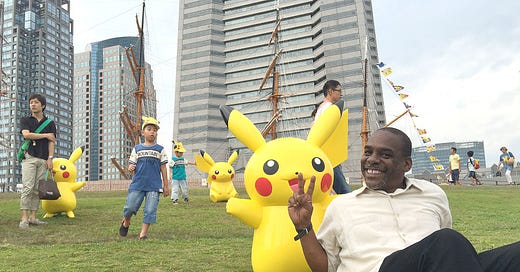OREO
Many Japanese people even struggle to express their opinions publicly in their own language, so doing so in a foreign language is a bridge too far for a lot of the students.
There’s a big English test coming up this month for senior students and so the Japanese English teachers are tasked with preparing the students to the best of their abilities. My coworker, Ms. Okubo (not real name) was explaining the test to the students in Japanese, and that today we would be focusing on one area of that test: Expressing Opinion.
Many Japanese people struggle to express their opinions publicly in their own language, so doing so in a foreign language is a bridge too far for many students. In anticipation of this obstacle, Ms. Okubo apparently has decided to furnish students with teacher-approved opinions or provide culturally friendly options.
For example, the first situation presented to the students by a white guy, presumably American, makes a statement along the lines of the following:
“At my school, we can choose our lunches. I had pizza, and my friend had a hamburger. But I heard you Japanese have no choice but to eat the same school lunch as your classmates daily. Which is better, in your opinion, the American or Japanese way?”
This read to me as, “We Americans eat pizza and hamburgers for lunch, which is unhealthy, as is our MO, and can get boring if eaten over and over, while you guys eat healthy meals that change every day.”
And I’m sure that’s what the kids heard, too.
Then, she explained OREO to the students: Opinion, Reason, Example, and back to Opinion. She gave several examples of OREO as it pertains to this school lunch scenario.
Honestly, the first time around, I started zoning out a bit because all of this was taking place in Japanese and it was taking so much concentration to follow it I grew weary. And I would be doing this class four more times that day, so I figured I’d catch it the next time around.
Then I heard Okubo say something in Japanese that jarred me from my reverie. She was explaining the American lunch system to the Japanese students as, “While everyday American schools have to choose between pizza and hamburgers, in Japanese we have the same lunch which is healthier for the students and…”
She felt my eyes and knew I’d understood her explanation, her shaping of their opinion, her propagandizing the kids. We shared a look, but then she continued without missing a beat. This was her job. Her whole lesson plan was built around making sure these kids, at the very least, walked away from this lesson having learned how to arrive at and express an opinion—even if the opinion was one that was crafted for them. I decided to stay in my lane.
But between the lessons, I asked her if she agreed with the logic she expressed to the students that everyone having the same lunch was healthier than a menu that offered a variety of options. She smiled and said, “No.” But it’s easy for the students to grasp the concept if we keep it simple.
Me: You really think the students didn’t see that logic was flawed?
Okubo: (Laughing nervously) Some probably did. I don’t think it’s a big deal, though.
Me: You’re probably right.
I said that, but I didn’t feel that. I just have to choose my battles wisely, and these types of battles happen every day here.
Later that day, we taught the same lesson to another class, and everything proceeded as before. Only after she shared the white guy’s ideas about school lunches she invited me into the discussion by asking me to express my opinion on the issue using OREO.
Me: Hmm, the question is which is better for students, eating the same school lunch or choosing different foods for lunch? Well, honestly, I think both have good points and bad points, but:
O- I believe students having a choice of what to eat for lunch is better. Why? Because
R- some students are bound to be vegetarian, so they don’t eat meat or fish, or vegan, so they don’t drink milk. Some may even be lactose intolerant. In these cases, a variety of offerings would be best.
E- For example, look at today’s lunch. You guys ate fish, rice, and milk to wash it down. It was delicious. I ate it myself. But, any vegetarians or vegans would not be able to eat that stuff. What do these people do when there are no other options? They’ll have to bring their own lunch from home. And while I’m sure most of you are very kind, some people might begin to think of them as abnormal or strange because they are not eating the same food as the rest of you. So,
O- That’s why I think various options are better for students.
The class applauded my OREO, as did Okubo.
She explained to the class that this was how to express an opinion…and had me demonstrate for the remaining three times we taught the lesson together.




